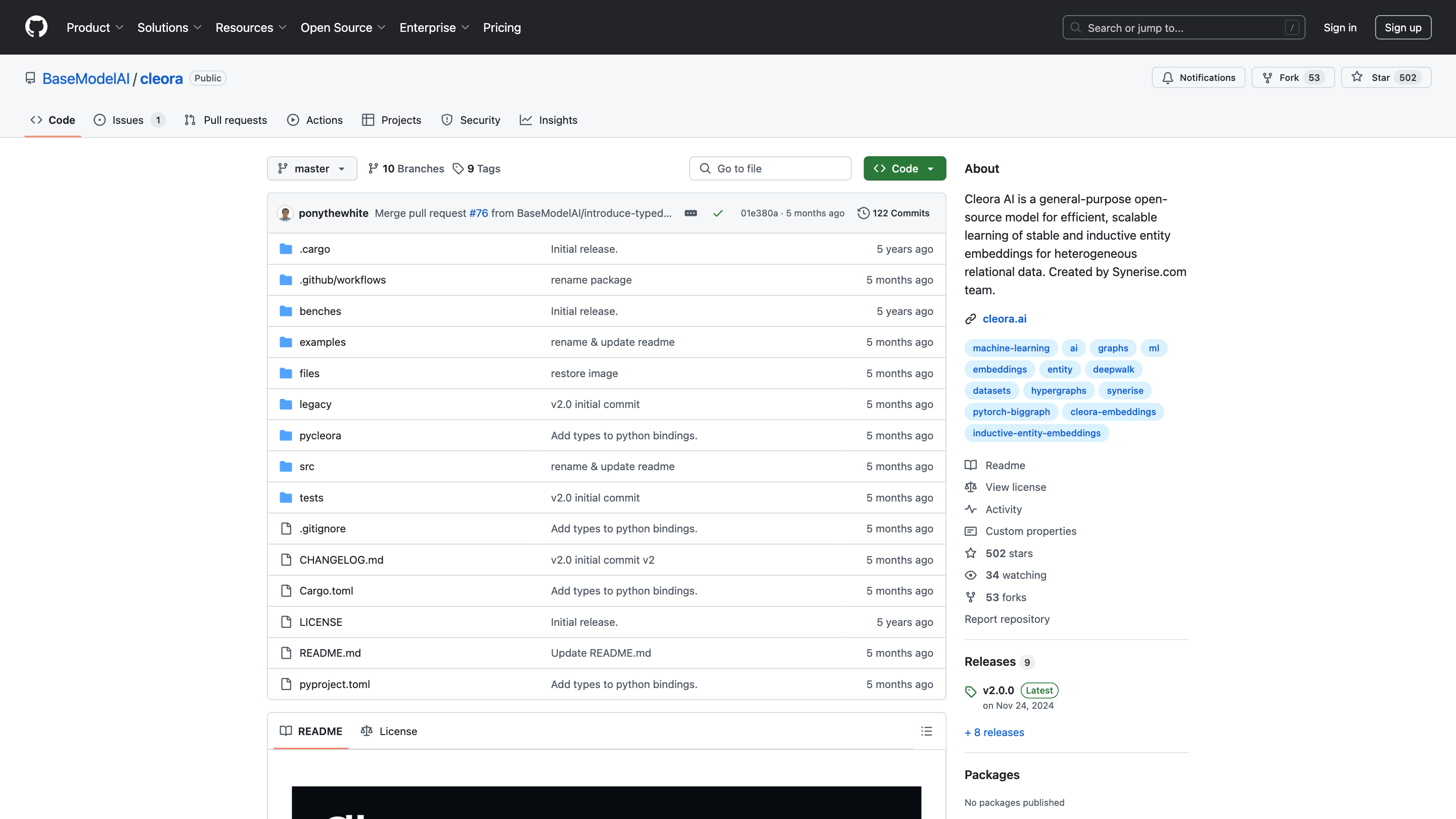Cleora PRO
Open siteResearch & Data Analysis
Introduction
Create quality embeddings effortlessly.
Cleora PRO Product Information
Cleora.AI | Create Your Enterprise Embeddings with 1 Click is an AI-powered embedding tool designed for data science and analytics teams to generate high-quality graph embeddings quickly without requiring expensive hardware. Cleora focuses on fast, scalable embeddings for large graphs, enabling enterprise-grade recommendations, segmentation, propensity modeling, and more. It produces behavioral embeddings from relational data (e.g., purchases, clicks, page views, transactions) and supports deployment in both open-source and enterprise environments.
What it does
- Builds embeddings for entities in large graphs (clients, products, stores, accounts, etc.) using fast, stable, and scalable random projections.
- Handles diverse data types such as ecommerce events, banking transactions, clickstream data, textual data, and more.
- Produces embeddings that reflect behavior history, suitable for downstream tasks like recommendations and propensity modeling.
- Offers Cleora PRO (Enterprise) and Cleora Open Source, with Cleora 2.0 delivering automatic scaling, ease of use, performance optimizations, and new features like item attributes support.
Key benefits
- 200x faster than DeepWalk; 4x–8x faster than PyTorch-BigGraph by Facebook.
- Two orders of magnitude faster than Node2Vec or DeepWalk; capable of embedding graphs with billions of edges on a single machine without GPUs.
- Inductive capability: embeddings for new entities can be computed on-the-fly.
- Cross-dataset compositionality: embeddings from multiple datasets can be averaged to yield meaningful vectors.
- Deterministic starting vectors ensure stability across similar datasets.
- Extreme parallelism and Rust-based implementation for performance.
Use cases
- Recommender Systems
- Client Segmentation
- Propensity Prediction
- Lifetime Value Modeling
- Churn Prediction
- Other enterprise graph-based models
How it works
- Embeds entities by leveraging relational data and behavioral history.
- Uses efficient graph embedding techniques to generate n-dimensional vectors.
- Automatic graph detection and minimal data requirements (as few as 3 columns extracted from your DB in Cleora 2.0).
- Produces embeddings that can be used directly for downstream ML tasks, analytics, and recommendations.
Technical highlights
- Implemented in Rust with thread-level parallelism for all calculations (input loading excluded).
- Dim-wise independence allows flexible merging and integration with downstream models.
- Highly scalable: capable of handling extremely large graphs on commodity hardware.
- Open-source availability with a GitHub repository and a vibrant community.
How to choose between editions
- Cleora Open Source: for teams who want control, transparency, and local deployment.
- Cleora PRO (Enterprise): for organizations needing structured support, governance, and scalability in an enterprise setting.
Core Features
- 1-click embedding creation for enterprise graphs
- Extremely fast embedding generation (2x+ faster than comparable methods; up to 200x faster than some baselines)
- Handles large-scale graphs without GPUs on a single machine
- Inductive embeddings for new entities
- Cross-dataset averaging for stable multi-source embeddings
- Automatic graph detection and minimal data requirements
- Rust-based implementation with high parallelism
- Open Source and Enterprise (Cleora 2.0) with improved scalability and item attribute support
Safety and Compliance
- Designed for enterprise use with emphasis on scalability, reproducibility, and governance. See the official GitHub and documentation for licensing and usage terms.
Related Insights & Resources
- Open-source repository and community discussions
- Enterprise deployment guides and benchmarks
- Research articles comparing Cleora to other graph embedding methods
